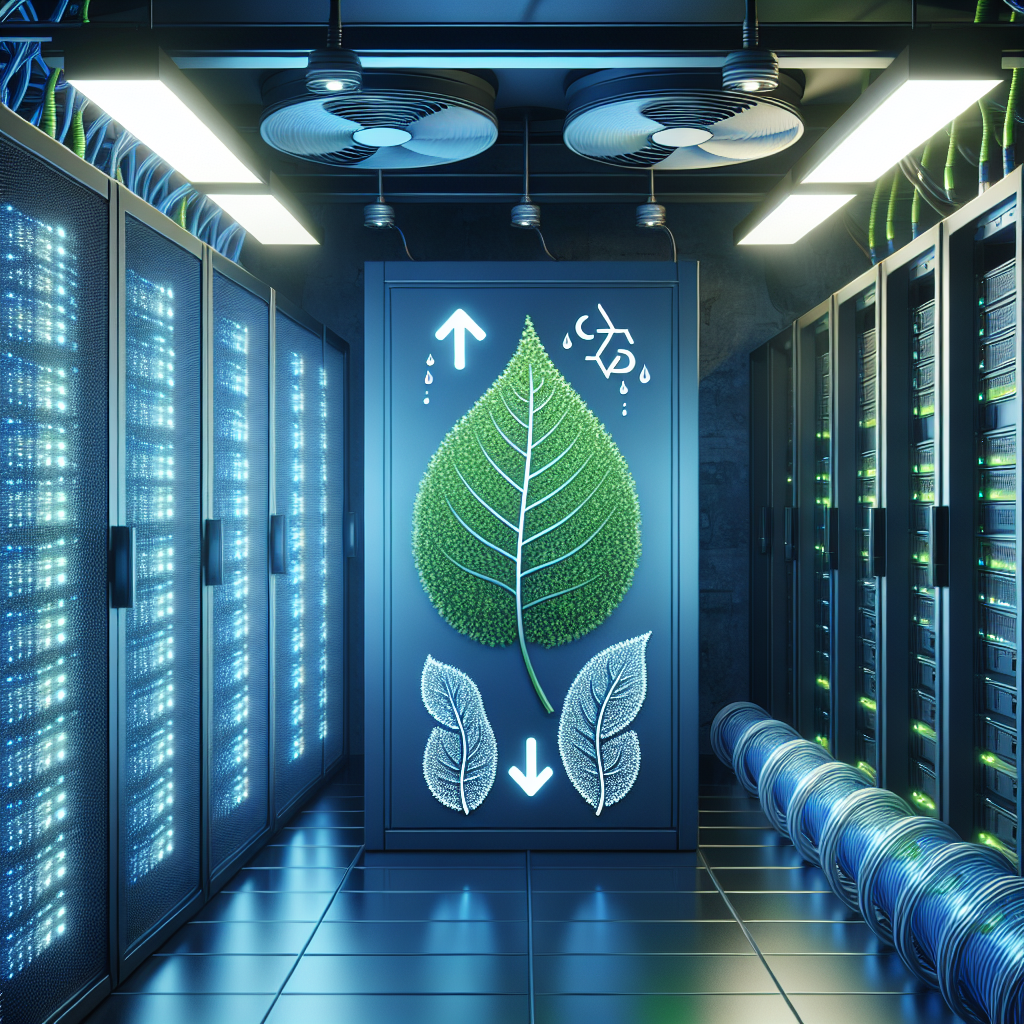Your cart is currently empty!
Tag: Data Center Energy Efficiency
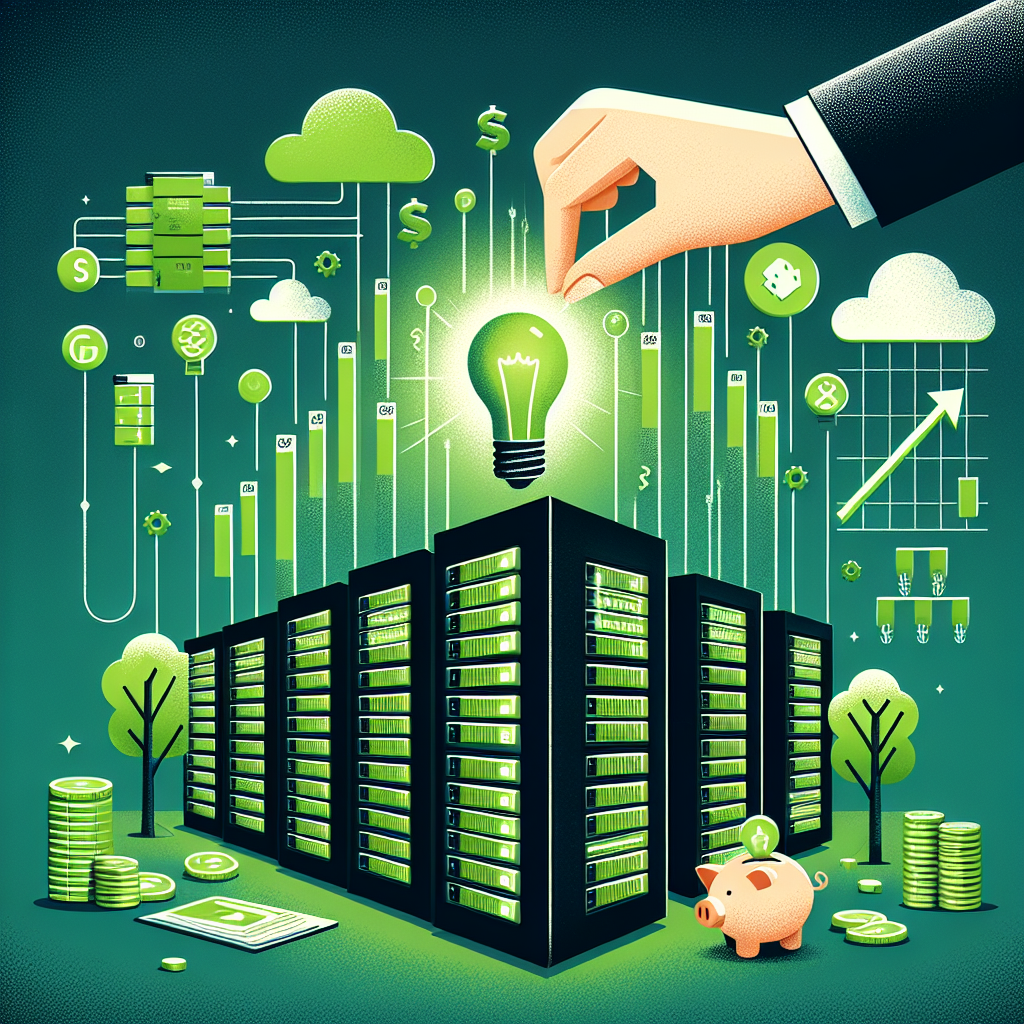
The Business Benefits of Investing in Data Center Energy Efficiency
In today’s digital age, data centers play a crucial role in storing, processing, and managing vast amounts of information for businesses of all sizes. With the increasing demand for data processing and storage, data centers have become a significant part of companies’ operations. However, the energy consumption of data centers has also risen significantly over the past few years, leading to higher operating costs and environmental concerns.Investing in data center energy efficiency can bring a wide range of benefits to businesses, both financial and environmental. Here are some of the key business benefits of investing in data center energy efficiency:
1. Cost savings: One of the most significant benefits of investing in data center energy efficiency is cost savings. By optimizing cooling systems, upgrading to energy-efficient servers, and implementing other energy-saving technologies, businesses can reduce their energy consumption and lower their operating costs significantly. In the long run, these cost savings can translate into higher profits for the company.
2. Increased reliability: Energy-efficient data centers are typically more reliable and less prone to downtime than traditional data centers. By investing in energy-efficient technologies, businesses can ensure that their data center operations run smoothly and efficiently, reducing the risk of costly downtime and disruptions to their business operations.
3. Compliance with regulations: Many countries and regions have strict regulations and guidelines regarding energy consumption and environmental impact. By investing in data center energy efficiency, businesses can ensure that they comply with these regulations, avoiding potential fines and penalties for non-compliance.
4. Improved brand reputation: In today’s environmentally conscious world, businesses that demonstrate a commitment to sustainability and energy efficiency can enhance their brand reputation and attract environmentally conscious customers. By investing in data center energy efficiency, businesses can showcase their commitment to reducing their environmental footprint and contributing to a more sustainable future.
5. Future-proofing: Investing in data center energy efficiency can future-proof businesses against rising energy costs and changing regulations. By implementing energy-efficient technologies and practices today, businesses can ensure that their data center operations remain cost-effective and environmentally friendly in the long term.
Overall, investing in data center energy efficiency can bring a wide range of benefits to businesses, from cost savings and increased reliability to improved brand reputation and compliance with regulations. By prioritizing energy efficiency in their data center operations, businesses can not only lower their operating costs but also contribute to a more sustainable future for the planet.

Energy Efficient Servers: Blueprints for Data Center Optimization by Corey Gough

Energy Efficient Servers: Blueprints for Data Center Optimization by Corey Gough
Price : 61.67
Ends on : N/A
View on eBay
In today’s digital age, data centers are at the heart of our technological infrastructure. With the increasing demand for data storage and processing power, it’s more important than ever to optimize energy efficiency in these facilities. Corey Gough, a leading expert in data center optimization, has developed a comprehensive blueprint for energy-efficient servers that can help reduce costs and minimize environmental impact.In his groundbreaking new book, “Energy Efficient Servers: Blueprints for Data Center Optimization,” Gough outlines practical strategies for maximizing efficiency and minimizing waste in data center operations. From selecting the right hardware and software to implementing smart cooling and power management systems, Gough provides a step-by-step guide to achieving optimal performance while reducing energy consumption.
With the rising cost of energy and growing concerns about environmental sustainability, the need for energy-efficient servers has never been greater. Gough’s book offers a roadmap for data center managers and IT professionals to make informed decisions that not only benefit their bottom line but also contribute to a greener, more sustainable future.
Whether you’re a seasoned data center professional or just starting out in the field, “Energy Efficient Servers: Blueprints for Data Center Optimization” is a must-read resource for anyone looking to improve the efficiency and sustainability of their data center operations. Don’t miss out on this essential guide to maximizing performance while minimizing environmental impact.
#Energy #Efficient #Servers #Blueprints #Data #Center #Optimization #Corey #Gough, Data Center Energy Efficiency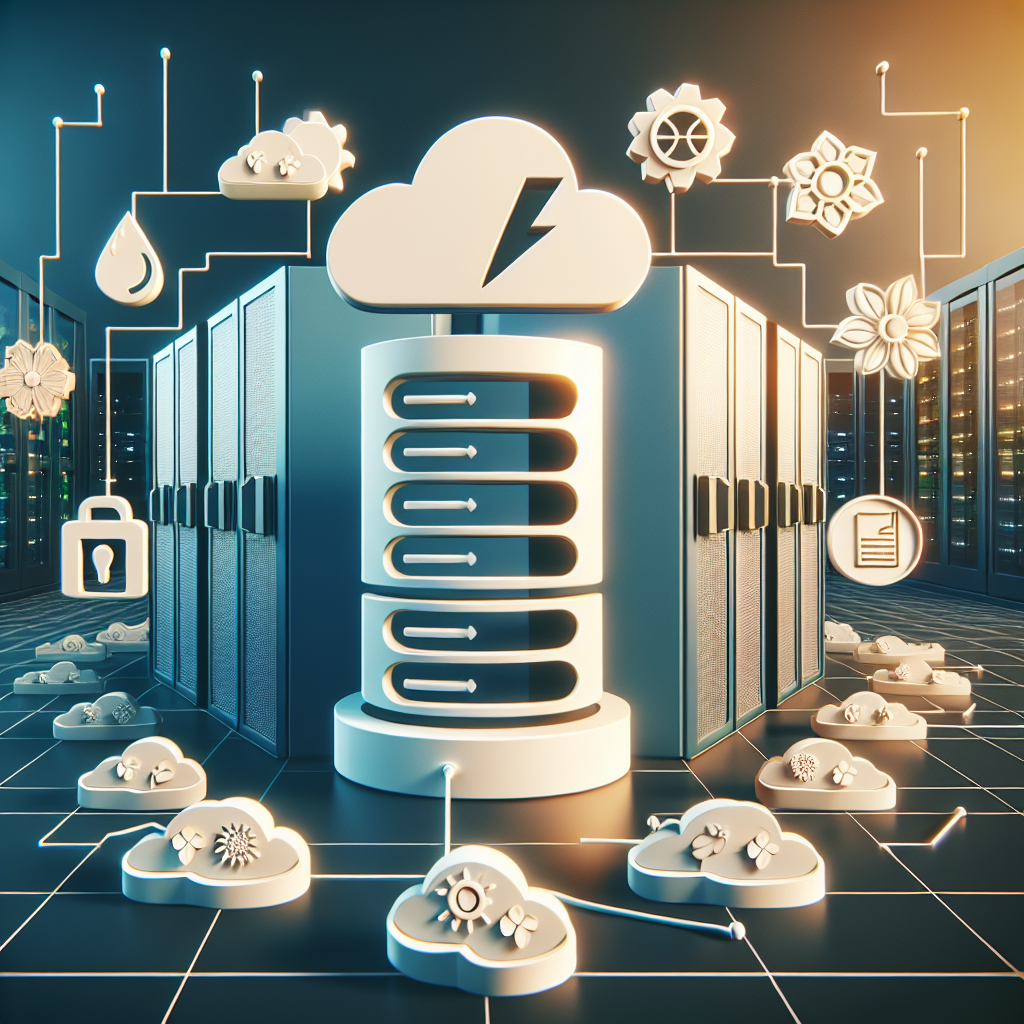
Case Studies in Successful Data Center Energy Efficiency Strategies
Data centers are essential for storing, processing, and distributing vast amounts of data. However, they are also notorious for being energy-intensive facilities due to the high demand for cooling and power consumption. In recent years, there has been a growing focus on improving energy efficiency in data centers to reduce costs and environmental impact. Many companies have successfully implemented strategies to optimize energy usage and minimize waste. In this article, we will explore some case studies of successful data center energy efficiency strategies.One company that has made significant strides in energy efficiency is Google. The tech giant has been at the forefront of sustainable practices, including its data centers. Google has implemented various energy-saving measures, such as using advanced cooling technologies, optimizing server performance, and utilizing renewable energy sources. By investing in energy-efficient infrastructure and operational practices, Google has been able to reduce its data center energy consumption by up to 50%.
Another success story is Microsoft, which has been focusing on improving energy efficiency across its global data center portfolio. Microsoft has adopted innovative cooling techniques, such as underwater data centers and liquid immersion cooling, to reduce energy consumption and carbon emissions. Additionally, Microsoft has invested in renewable energy projects to power its data centers, further enhancing their sustainability.
Facebook is another company that has made strides in energy efficiency in its data centers. The social media giant has implemented a range of energy-saving initiatives, including using airside economization, optimizing server design, and deploying energy management software. These efforts have helped Facebook achieve a Power Usage Effectiveness (PUE) rating of 1.08 in some of its data centers, surpassing industry standards for efficiency.
In addition to tech giants, smaller companies have also successfully implemented energy efficiency strategies in their data centers. For example, the data center provider Equinix has focused on improving energy efficiency through measures such as hot aisle containment, variable frequency drives for cooling systems, and energy-efficient lighting. These initiatives have helped Equinix reduce its energy consumption and operating costs, while also enhancing its sustainability credentials.
Overall, these case studies highlight the importance of implementing energy efficiency strategies in data centers to reduce costs, improve performance, and minimize environmental impact. By investing in innovative technologies, optimizing operational practices, and leveraging renewable energy sources, companies can achieve significant energy savings and contribute to a more sustainable future. As the demand for data centers continues to grow, it is essential for companies to prioritize energy efficiency and adopt best practices to ensure a greener and more efficient infrastructure.
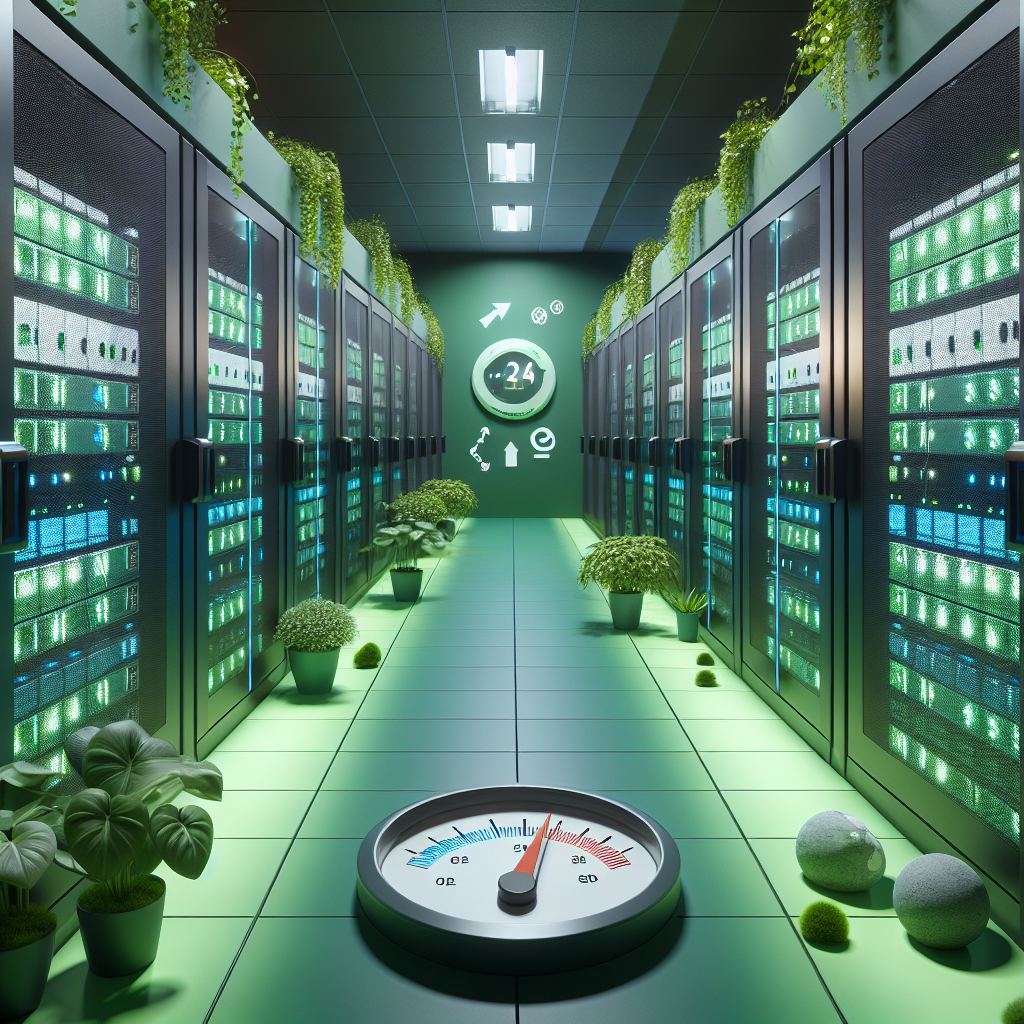
How to Reduce Your Data Center’s Carbon Footprint Through Energy Efficiency
In today’s world, where environmental concerns are at the forefront of many discussions, reducing our carbon footprint has never been more important. One area where businesses can make a significant impact is in their data centers, which consume large amounts of energy and contribute to greenhouse gas emissions. By implementing energy-efficient practices, data centers can significantly reduce their carbon footprint and contribute to a greener planet.One of the key ways to reduce a data center’s carbon footprint is by optimizing cooling systems. Cooling accounts for a significant portion of a data center’s energy consumption, so improving the efficiency of cooling systems can lead to substantial energy savings. This can be achieved by implementing hot aisle/cold aisle containment systems, using variable speed drives on cooling equipment, and implementing free cooling methods such as air-side economization.
Another important aspect of energy efficiency in data centers is server virtualization. By consolidating servers and running multiple virtual machines on a single physical server, businesses can reduce the overall energy consumption of their data center. This not only reduces energy usage but also leads to cost savings by eliminating the need for additional physical servers.
In addition to cooling and server virtualization, businesses can also reduce their data center’s carbon footprint by optimizing power distribution and implementing energy-efficient lighting systems. Using energy-efficient power distribution units and upgrading to LED lighting can lead to significant energy savings and reduce greenhouse gas emissions.
Furthermore, businesses can consider using renewable energy sources to power their data centers. Installing solar panels or purchasing renewable energy credits can help offset the carbon emissions associated with running a data center. This not only reduces the environmental impact of the data center but also demonstrates a commitment to sustainability.
Overall, reducing a data center’s carbon footprint through energy efficiency requires a comprehensive approach that addresses cooling systems, server virtualization, power distribution, lighting, and renewable energy sources. By implementing these practices, businesses can significantly reduce their environmental impact and contribute to a more sustainable future.
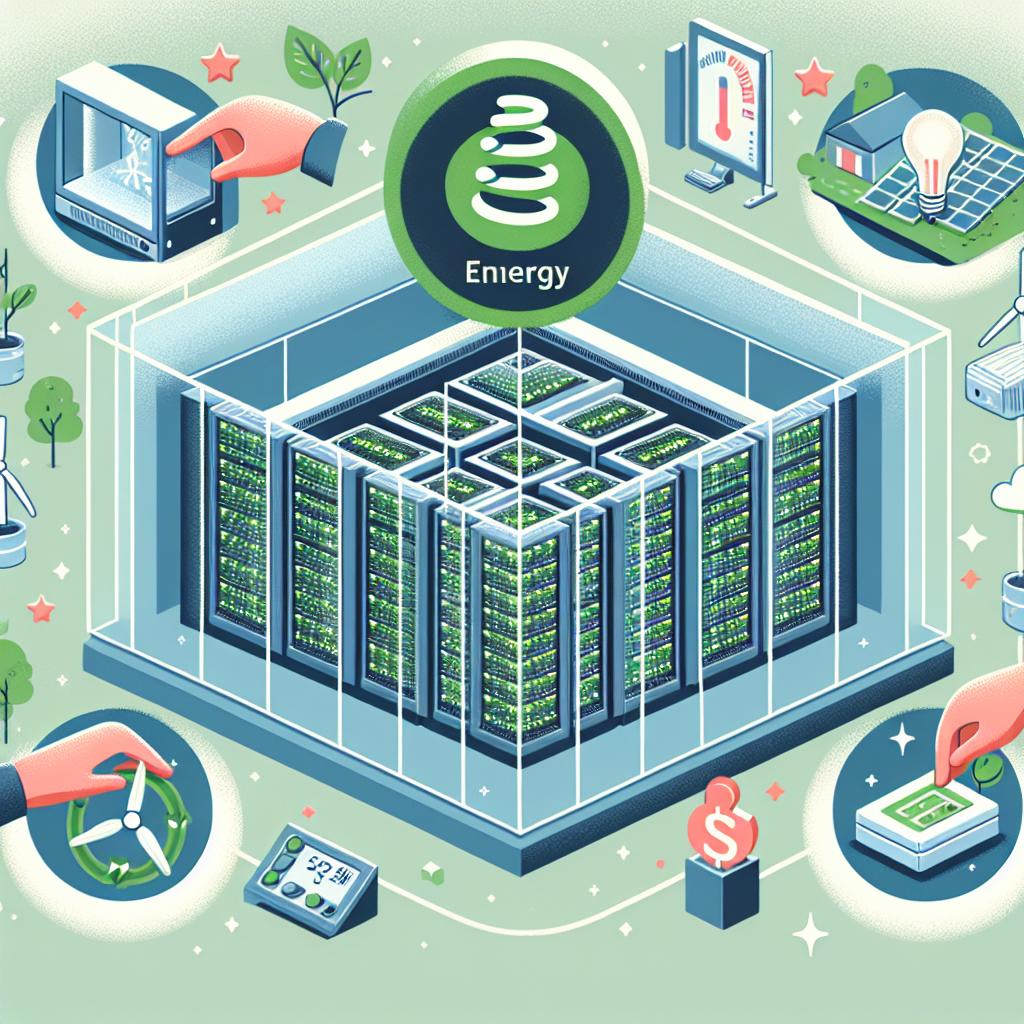
Maximizing Data Center Energy Efficiency: Tips and Tricks for Success
In today’s digital age, data centers play a crucial role in storing and managing vast amounts of information. With the increasing demand for data storage and processing power, data center energy consumption has become a significant concern for organizations. Maximizing data center energy efficiency is not only essential for reducing operational costs but also for reducing environmental impact. Here are some tips and tricks for success in maximizing data center energy efficiency:1. Implement Virtualization Technology: Virtualization allows multiple virtual servers to run on a single physical server, reducing the number of physical servers needed and optimizing resource utilization. This can lead to significant energy savings by reducing the overall power consumption of the data center.
2. Optimize Cooling Systems: Cooling systems account for a significant portion of a data center’s energy consumption. Implementing efficient cooling technologies, such as hot aisle/cold aisle containment, can help reduce cooling costs and improve energy efficiency. Additionally, using outside air or water-based cooling systems can further reduce energy consumption.
3. Use Energy-Efficient Hardware: Invest in energy-efficient servers, storage devices, and networking equipment to reduce power consumption. Look for Energy Star-rated equipment and consider upgrading to more energy-efficient hardware to maximize energy savings.
4. Monitor and Manage Energy Usage: Implement energy monitoring and management systems to track energy consumption in real-time and identify areas for improvement. By monitoring energy usage, data center operators can identify inefficiencies and implement strategies to optimize energy consumption.
5. Implement Power Management Strategies: Implement power management strategies, such as consolidating workloads, optimizing server utilization, and implementing power capping, to reduce energy consumption. By dynamically adjusting power usage based on workload demands, data centers can achieve significant energy savings.
6. Consider Renewable Energy Sources: Consider integrating renewable energy sources, such as solar or wind power, into the data center’s energy mix. By using renewable energy sources, data centers can reduce their carbon footprint and lower energy costs in the long run.
7. Conduct Regular Energy Audits: Conduct regular energy audits to identify opportunities for energy efficiency improvements. By assessing energy usage and identifying inefficiencies, data center operators can implement targeted strategies to optimize energy consumption.
Maximizing data center energy efficiency is essential for reducing operational costs, improving sustainability, and meeting environmental goals. By implementing these tips and tricks for success, data center operators can achieve significant energy savings and reduce their environmental impact. Investing in energy-efficient technologies, optimizing cooling systems, monitoring energy usage, and implementing power management strategies are key steps in maximizing data center energy efficiency. By taking proactive measures to improve energy efficiency, organizations can achieve cost savings and sustainability goals while maintaining high-performance data center operations.
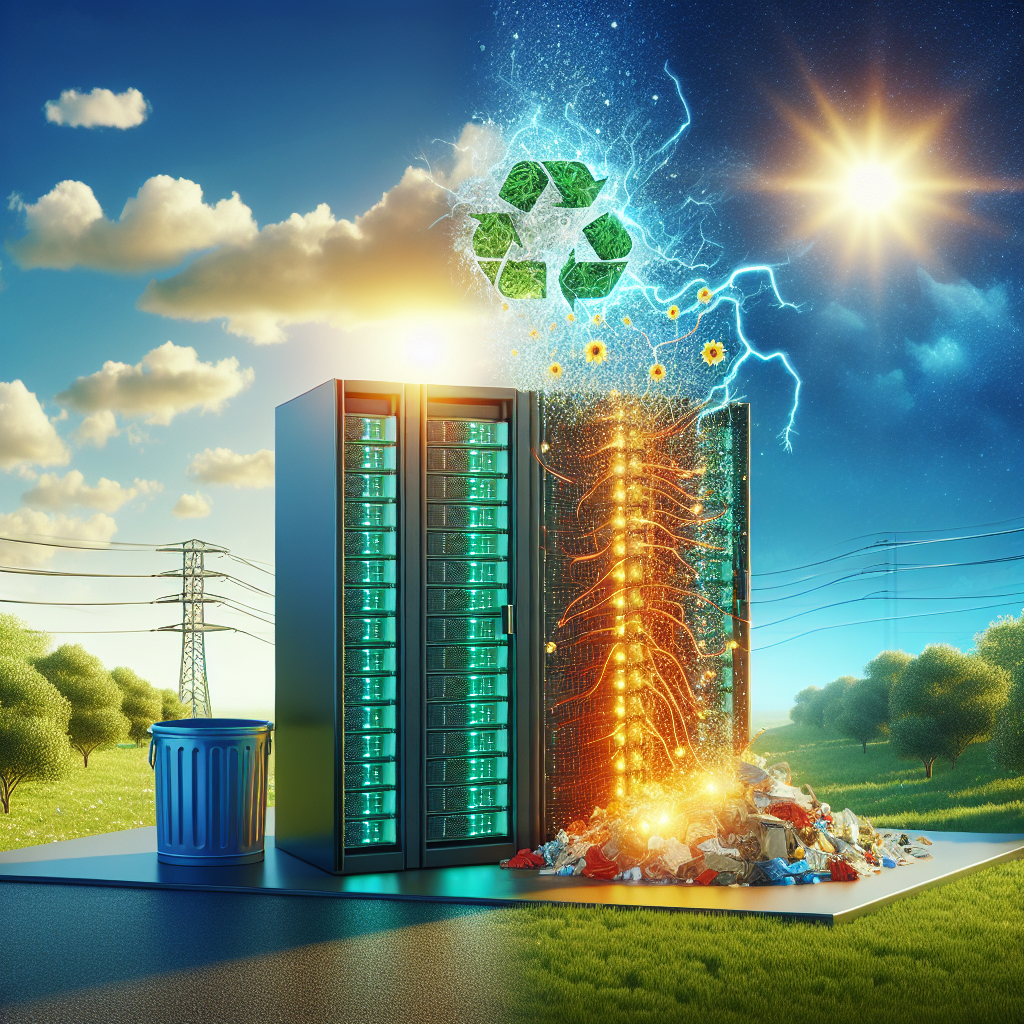
From Waste to Wattage: How Data Centers are Harnessing Energy Efficiency for a Greener Future
In today’s digital age, data centers have become an integral part of our everyday lives. These facilities house the servers and networking equipment that power the internet, allowing us to access information and communicate with others around the world. However, the energy consumption of data centers has become a growing concern as the demand for data continues to skyrocket.In response to this challenge, data centers are increasingly turning to energy-efficient practices to reduce their carbon footprint and minimize their impact on the environment. One such practice is the use of waste-to-energy technologies, which convert organic waste materials into electricity or heat.
By harnessing the power of waste, data centers are able to not only reduce their energy consumption, but also divert waste from landfills and reduce greenhouse gas emissions. This innovative approach to energy generation is helping to create a more sustainable future for the industry.
One example of waste-to-energy technology being used in data centers is the anaerobic digestion of food waste. This process involves breaking down organic materials in the absence of oxygen, producing biogas that can be used to generate electricity or heat. By diverting food waste from landfills and converting it into renewable energy, data centers are able to reduce their environmental impact and lower their energy costs.
Another energy-efficient practice being adopted by data centers is the use of renewable energy sources such as solar and wind power. By investing in solar panels and wind turbines, data centers are able to generate clean, renewable energy on-site, reducing their reliance on fossil fuels and lowering their carbon emissions.
In addition to waste-to-energy technologies and renewable energy sources, data centers are also implementing energy-efficient design and cooling systems to further reduce their energy consumption. By using advanced cooling technologies, such as liquid cooling and hot aisle containment systems, data centers are able to optimize their energy usage and minimize their environmental impact.
Overall, the shift towards energy efficiency in data centers is not only beneficial for the environment, but also for the industry as a whole. By embracing sustainable practices and harnessing the power of waste-to-energy technologies, data centers are leading the way towards a greener future. As the demand for data continues to grow, it is imperative that data centers continue to prioritize energy efficiency and environmental sustainability in order to ensure a more sustainable future for generations to come.
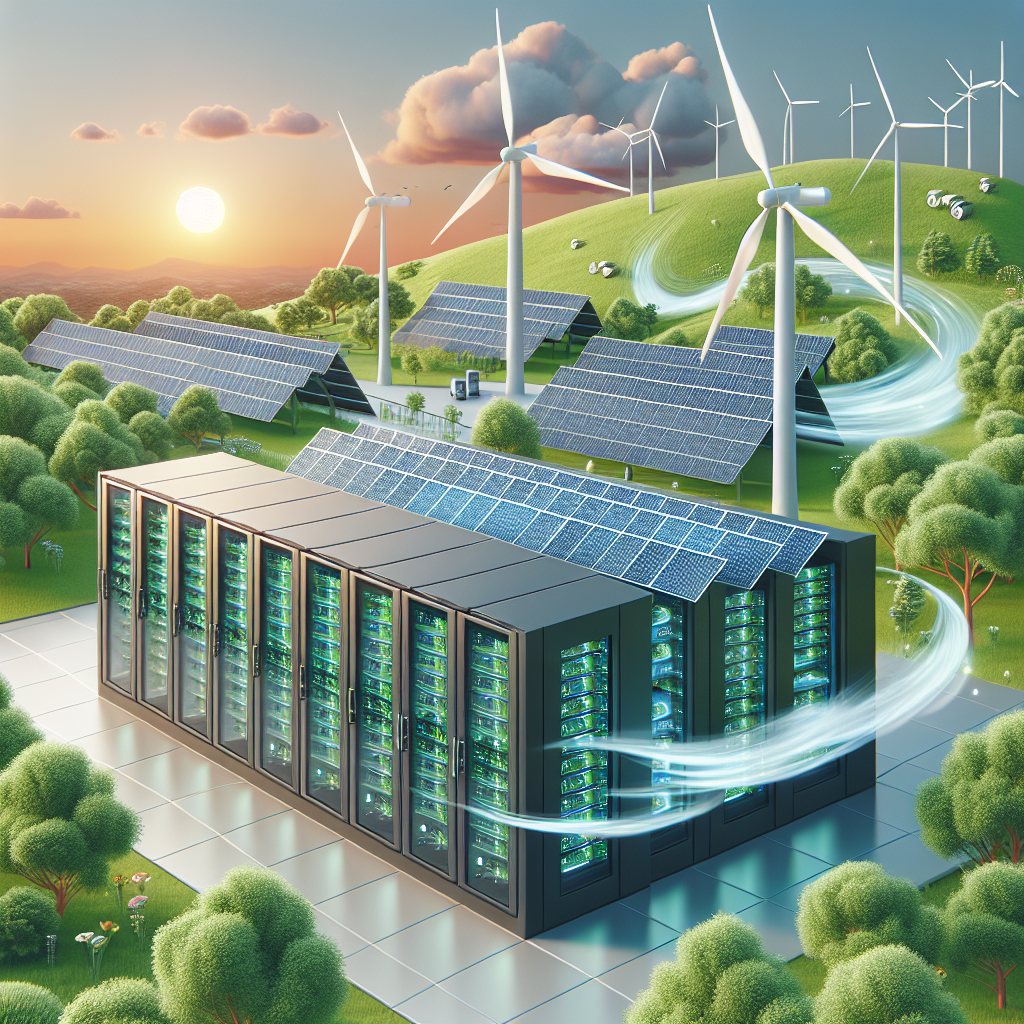
The Power of Efficiency: How Data Centers are Reducing Energy Consumption and Environmental Impact
In today’s technology-driven world, data centers play a crucial role in storing, processing, and transmitting data for businesses and individuals alike. However, the rapid growth of data centers has raised concerns about their impact on the environment, particularly in terms of energy consumption and carbon emissions. Thankfully, many data centers are now focusing on increasing efficiency to reduce their environmental footprint.One of the key ways that data centers are reducing their energy consumption is through the use of advanced cooling systems. Data centers generate a significant amount of heat due to the large number of servers and equipment they house. Traditional air conditioning systems were not only energy-intensive but also inefficient in maintaining optimal temperatures. Many data centers are now adopting innovative cooling technologies, such as liquid cooling and hot aisle/cold aisle containment, which can significantly reduce energy usage and lower cooling costs.
Another important aspect of efficiency in data centers is the optimization of server utilization. In the past, servers were often underutilized, running at low capacity even during peak times. By implementing virtualization and consolidation techniques, data centers can maximize server utilization, reduce the number of physical servers needed, and ultimately lower energy consumption. Additionally, data centers are investing in energy-efficient hardware and equipment, such as solid-state drives and energy-efficient processors, to further reduce their energy usage.
Furthermore, data centers are increasingly turning to renewable energy sources to power their operations. Many data centers are now sourcing electricity from solar, wind, and hydroelectric power, reducing their reliance on fossil fuels and lowering their carbon footprint. Additionally, some data centers are investing in energy storage solutions, such as batteries and flywheels, to store excess renewable energy and use it during peak demand periods.
In addition to reducing energy consumption, data centers are also focusing on improving their overall environmental impact. Many data centers are implementing sustainable practices, such as recycling e-waste, using energy-efficient lighting, and reducing water consumption. Some data centers are even pursuing green building certifications, such as LEED (Leadership in Energy and Environmental Design), to demonstrate their commitment to sustainability.
Overall, the power of efficiency in data centers is not only reducing energy consumption but also mitigating their environmental impact. By adopting advanced cooling systems, optimizing server utilization, and investing in renewable energy sources, data centers are leading the way in creating a more sustainable and eco-friendly future. As the demand for data continues to grow, it is crucial that data centers continue to prioritize efficiency and sustainability to minimize their environmental footprint.
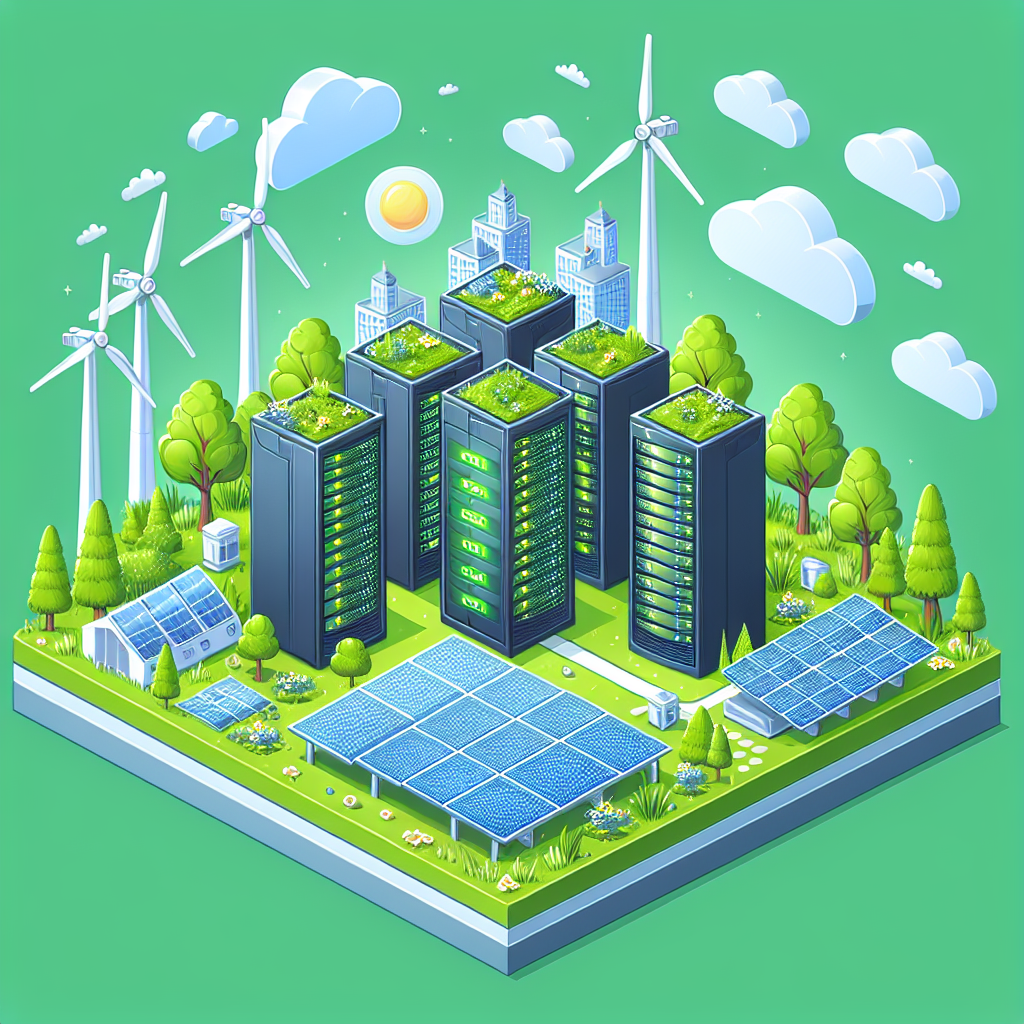
Eco-Friendly Data Centers: How Energy Efficiency is Reshaping the Industry
In recent years, the push for sustainability and eco-friendly practices has become a top priority for many industries, including the data center industry. As the demand for data storage and processing continues to grow, so does the energy consumption of data centers. In fact, data centers are known for being some of the largest consumers of energy in the world. However, with the increasing focus on energy efficiency and environmental responsibility, data centers are now turning to eco-friendly practices to reduce their carbon footprint and lower their energy costs.One of the key ways in which data centers are becoming more eco-friendly is through the use of renewable energy sources. Many data centers are now powered by solar, wind, or hydroelectric power, which helps reduce their reliance on fossil fuels and lower their greenhouse gas emissions. By harnessing renewable energy sources, data centers can operate more sustainably and reduce their impact on the environment.
In addition to using renewable energy sources, data centers are also implementing energy-efficient technologies to reduce their overall energy consumption. This includes using more efficient cooling systems, optimizing server utilization, and implementing energy-saving measures such as virtualization and consolidation. By making these changes, data centers can significantly reduce their energy usage and operating costs, while also lowering their carbon footprint.
Furthermore, data centers are also exploring innovative ways to improve their energy efficiency, such as utilizing free cooling techniques, incorporating energy-efficient hardware, and implementing smart monitoring and management systems. These technologies not only help data centers operate more efficiently but also enable them to better track and manage their energy usage in real-time.
Overall, the shift towards eco-friendly data centers is reshaping the industry and driving a new era of sustainability and energy efficiency. By embracing renewable energy sources, implementing energy-efficient technologies, and adopting innovative practices, data centers can significantly reduce their environmental impact and contribute to a more sustainable future. As the demand for data storage continues to grow, it is crucial that data centers prioritize energy efficiency and environmental responsibility to ensure a greener and more sustainable industry.
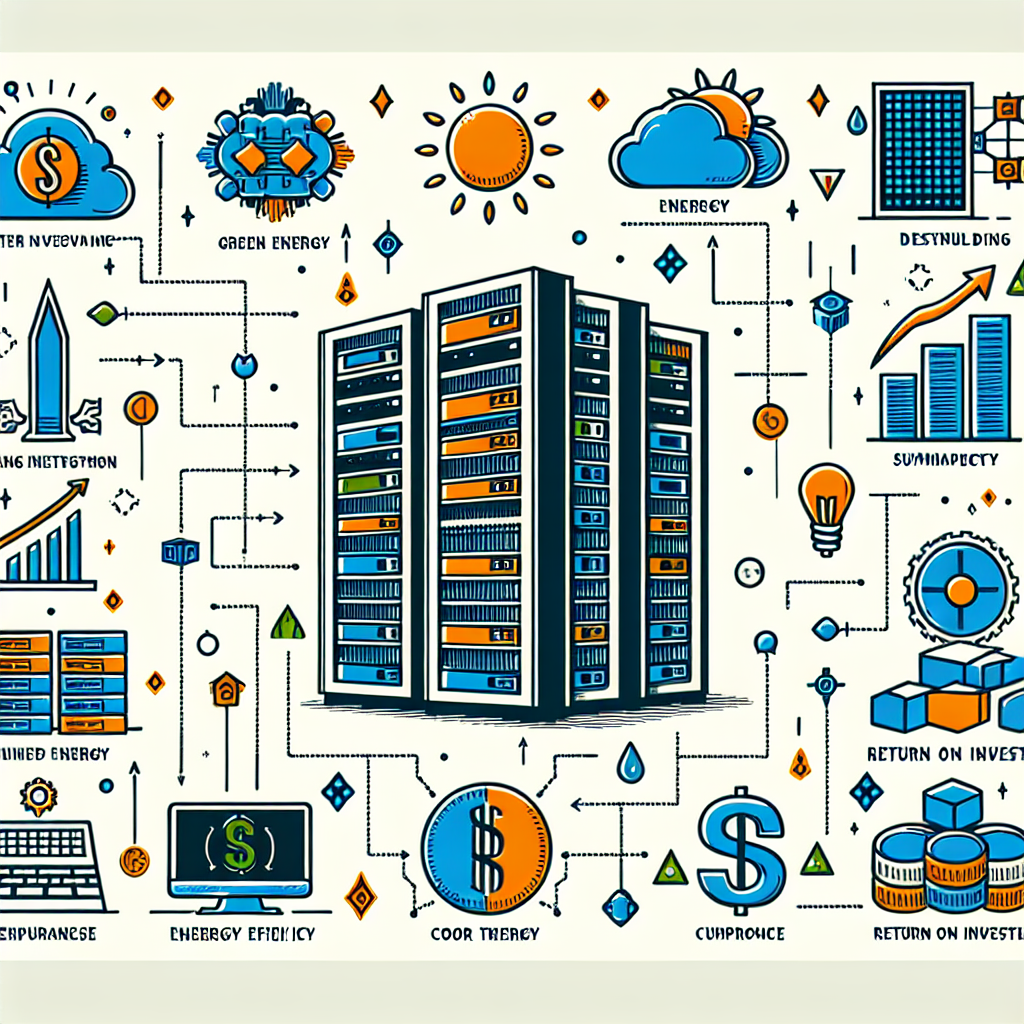
The Business Case for Data Center Energy Efficiency: How Efficiency Improvements Can Drive ROI
Data centers are the backbone of modern technology, helping to store and process vast amounts of data that power our digital world. However, these data centers are also notorious energy hogs, consuming massive amounts of electricity to keep servers and cooling systems running 24/7.With the growing focus on sustainability and energy efficiency, businesses are starting to realize the importance of making their data centers more energy efficient. Not only does this help reduce their carbon footprint, but it can also drive significant return on investment (ROI) for the business.
There are several ways in which improving data center energy efficiency can lead to financial benefits for a business. One of the most obvious benefits is cost savings. By reducing energy consumption, businesses can lower their electricity bills and operating expenses. This can result in significant savings over time, especially for large data centers that consume vast amounts of electricity.
In addition to cost savings, improving data center energy efficiency can also enhance the reliability and performance of the data center. By optimizing cooling systems and power distribution, businesses can reduce the risk of downtime and improve the overall operational efficiency of their data centers. This can help prevent costly outages and disruptions that can impact the business’s bottom line.
Furthermore, investing in energy efficiency can also help businesses stay ahead of regulatory requirements and industry standards. With governments and regulatory bodies increasingly focusing on energy conservation and sustainability, businesses that proactively improve their data center energy efficiency can demonstrate their commitment to environmental responsibility and compliance with regulations.
Moreover, improving data center energy efficiency can also enhance the overall reputation and brand image of a business. Consumers and stakeholders are becoming more conscious of environmental issues and are increasingly looking to support businesses that prioritize sustainability and energy efficiency. By investing in energy-efficient practices, businesses can differentiate themselves in the market and attract environmentally conscious customers and partners.
Overall, the business case for data center energy efficiency is clear. By reducing energy consumption, cutting costs, enhancing reliability, and demonstrating environmental responsibility, businesses can drive significant ROI and gain a competitive edge in today’s market. It’s time for businesses to prioritize energy efficiency in their data centers and reap the financial and environmental benefits that come with it.
